New Beginnings

I’m very excited to be writing to you today as Valley Vision’s new CEO. After six years at Valley Vision, most recently as the Director of Research and Strategy, I’m well acquainted with and fully committed to Valley Vision’s triple bottom line values of economic prosperity, social equity, and environmental sustainability to create livable communities. I’m also very aware that I’m coming into this leadership position at a difficult time in our history. As I begin my tenure as CEO, here is what I believe Valley Vision will need to focus on for the next three months and beyond, as we continue to navigate turmoil and challenges to our communities, economy, and well-being.
- Work from our strengths to be of service: Valley Vision is a servant leadership organization – we act as a regional steward to be of service to the people and places of our region. We are at our best when we are driving and catalyzing collaboration, advancing cutting edge applied research, and inspiring communities and leadership. With this in mind, we’ve prioritized a specific set of collaborative work to address challenges of the moment: creating an inclusive economy to support the region, creating pathways to future jobs, advancing digital inclusion for all, and increasing broadband access. The problems we face are complex and broad – Valley Vision will do best to focus our actions where we can be effective and valuable using our strengths to solve pressing issues.
- Do the next right thing: In this time of deep uncertainty, we act from our values and integrity and put one foot in front of the other to do the next right thing, even when it is hard or the big picture is unclear. In early Spring, that meant retreating to our homes to work and aiding in emergency response as we could. This summer, that has meant reflecting on how we can more deeply focus on racial justice, including participating in in-depth racial equity training during the month of July and developing concrete plans for ensuring that racial equity is central to our mission and apparent in the ways we recruit and empower diverse staff and the ways we advance our work. In the face of shifting conditions and difficulty, it is important to keep moving forward and meet each new challenge with compassion and humanity.
- Take the opportunity to reimagine: Change is knocking on our door, are we going to listen? COVID-19 has illuminated weaknesses in our systems. Let’s not rush to restore as we move forward in recovery – rather, let’s reimagine a better, more equitable future that reflects the world we need now, not the legacy of the past. The pain that has brought about a more widespread awareness of social injustice can pave the way for needed systemic changes to create a more just society. The pivot towards remote education can pave the way to more accessible and tailored educational systems that meet the needs of more students. The sudden grounding to home can create a path to more telework opportunities in the long term, reducing pollution and climate change impacts. These opportunities to change are here, it is up to us to seize them.
The job ahead won’t be easy and the conditions are as complex and difficult as I’ve seen in my lifetime. Since the announcement of my new position as CEO, I have been grateful for the expressions of support of many leaders and community members in our region. I know that I will continue to rely on that support, just as people in this region can rely on me. Grappling with the challenges that we face in the region will require that we do this together, working to reimagine and create a future that is better than our past.
Evan Schmidt is Valley Vision’s Chief Executive Officer.
Those Were the Days…
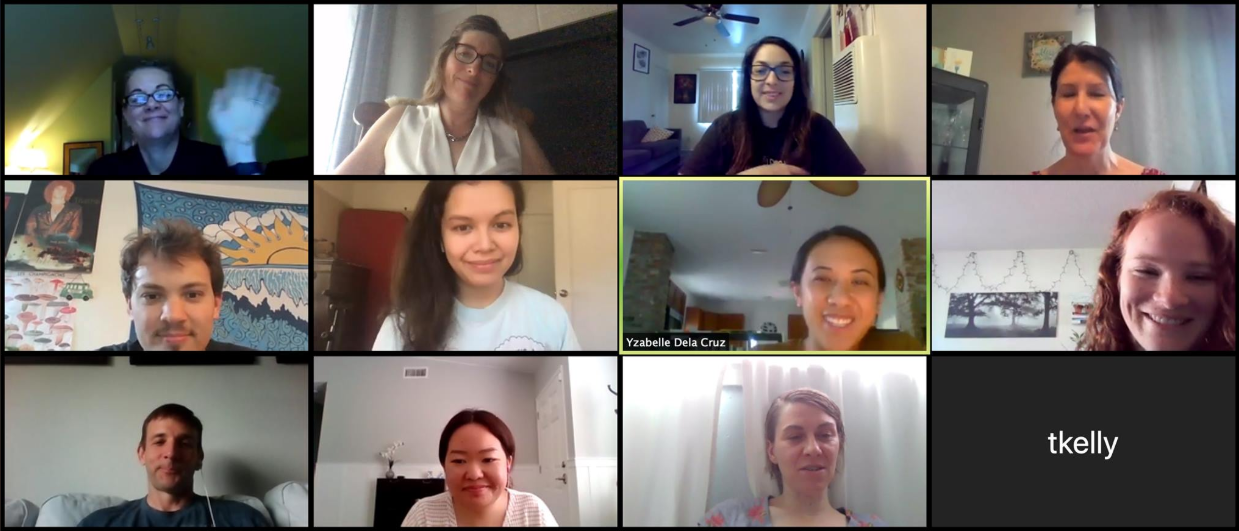
My term as Interim CEO ends on June 30, as the organization welcomes Evan Schmidt as its next CEO. Although it’s been a five-month span, my thoughts about this Interim CEO period are centered on the four weeks beginning in mid-March – that concentrated period of intense upheaval, uncertainty, and ceaseless sudden changes. The memory of what it actually felt like to live those days has ebbed (the same protective mechanism that fades the memory of childbirth, perhaps?). But four strong messages from those weeks continue to stick:
Know the risks but aim for the opportunities. Like all organizations, we quickly conducted some COVID-impact financial stress tests. It’s only prudent, in a time like this, to figure out what bad things might happen and what you would do about them, and the effort gave us good insights. But as important as it is to know the risks, it’s just as important to continue to aim for potential and opportunity. Balancing worry with hope – creating informed optimism – is steadying in unsteady times.
Remote working relationships can be “more real.” Working remotely, we’ve all seen more of each other’s whole lives during these months than before. Not just random portions of our homes, but also the kids, partners, and pets that we share them with. As well, because we were all adjusting to the tumultuous changes at the same time, meetings I was part of paused often to just process, together, the personal impacts of so much change and worry. Acknowledging the whole life that we each have is more complete and honest, even though it’s happening in little Zoom boxes on our screens.
There is strength in working for the collective good. We Americans tend strongly toward values of individualism and independence, yet this virus has reminded us that we are also interdependent and social beings. To a degree not seen in a generation, we have needed to work together, and to make broad societal and personal sacrifices for our collective, species-wide benefit. This has been hard to do, and hard to sustain, but has also been inspiring and confidence-building.
Ultimately, we are all more capable and resilient than we know. Beginning in those weeks of March, we’ve all caught glimpses of the potential and capacity within us all. We all adapted, innovated, and persevered at all the levels of our lives simultaneously, and at breakneck speed. Over the span of days, organizations moved entirely online and remote; businesses closed and laid off employees; parents juggled work and kids simultaneously; families began struggles with unemployment and finances; governments and nonprofits created short-term support programs out of whole cloth and launched them within days; and so much more. Has it been painful, heartbreaking, ugly, and confusing? Without doubt, and none of it would ever be wished for. But even so, and amid such need, we have all been showing our individual and collective spirits, strengths, and abilities.
I am grateful to have been trusted to lead this organization, in this community, during this time, and look forward to what we all continue to accomplish – together.
Meg Arnold is Interim CEO of Valley Vision through June 30.
Valley Vision Selects New CEO
Our Path Forward
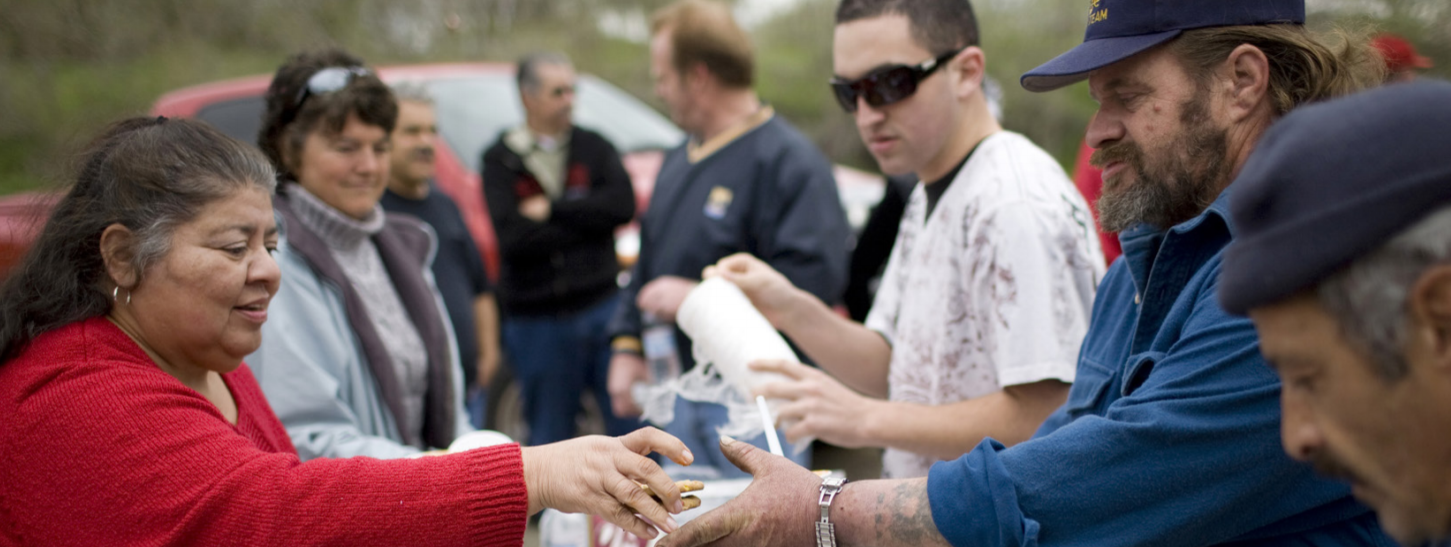
Last week, a friend and colleague wrote me about George Floyd’s killing and its aftermath. She offered a different quote by Dr. Martin Luther King, Jr. than we referenced in our last Vantage Point, and reminded me that his “messages around economic justice are often overlooked, yet inseparable from social justice solutions.”
Valley Vision is a “triple bottom line” organization, which is a wonky way to say that we hold three co-equal priorities in our work: equity, the economy, and the environment. Our work strives to balance the interconnections between these three priorities, and recognizes that they are inseparable from each other.
In late May, Valley Vision and three partners launched “Our Path Forward: The Prosperity Strategy,” which is our region’s first intentionally inclusive economic development strategy. The strategy resulted from the findings of the 2018 Brookings Institution report, which made clear the entrenched inequities in our communities – people who are disadvantaged by income, education, employment, connectivity, and opportunity. These inequities cut predominantly along lines of race and ethnicity, and also exist across and within urban and rural communities.
It was clear, in the Brookings report, that even as we seek a strong and healthy economy built on our existing strengths, ensuring that opportunity is truly available to all is absolutely imperative for people and the communities in which they live as well as for the long-term strength and resilience of our economy.
There are many resources about “Our Path Forward” online, including the six core strategies that will allow us to scale business, enable people, and build place. You can visit the website, view the webinar with which we launched the plan, read the 13 page summary, and digest the 150 page Comprehensive Economic Development Strategy which has been submitted to the U.S. Economic Development Administration (EDA) and qualifies our region to apply for EDA grant funds for the next five years.
Dr. King said, of economic justice, that “The dignity of the individual will flourish when the decisions concerning his life are in his own hands, when he has the assurance that his income is stable and certain, and when he knows that he has the means to seek self-improvement.” The Prosperity Strategy is the Capital Region’s roadmap toward that definition of economic justice, and Valley Vision is committed both to its own role in seeing it through, and as well to the conversations and partnerships across our communities that will enable us all to succeed.
Meg Arnold is Interim CEO of Valley Vision through June 30.
Valley Vision Names Evan Schmidt As CEO
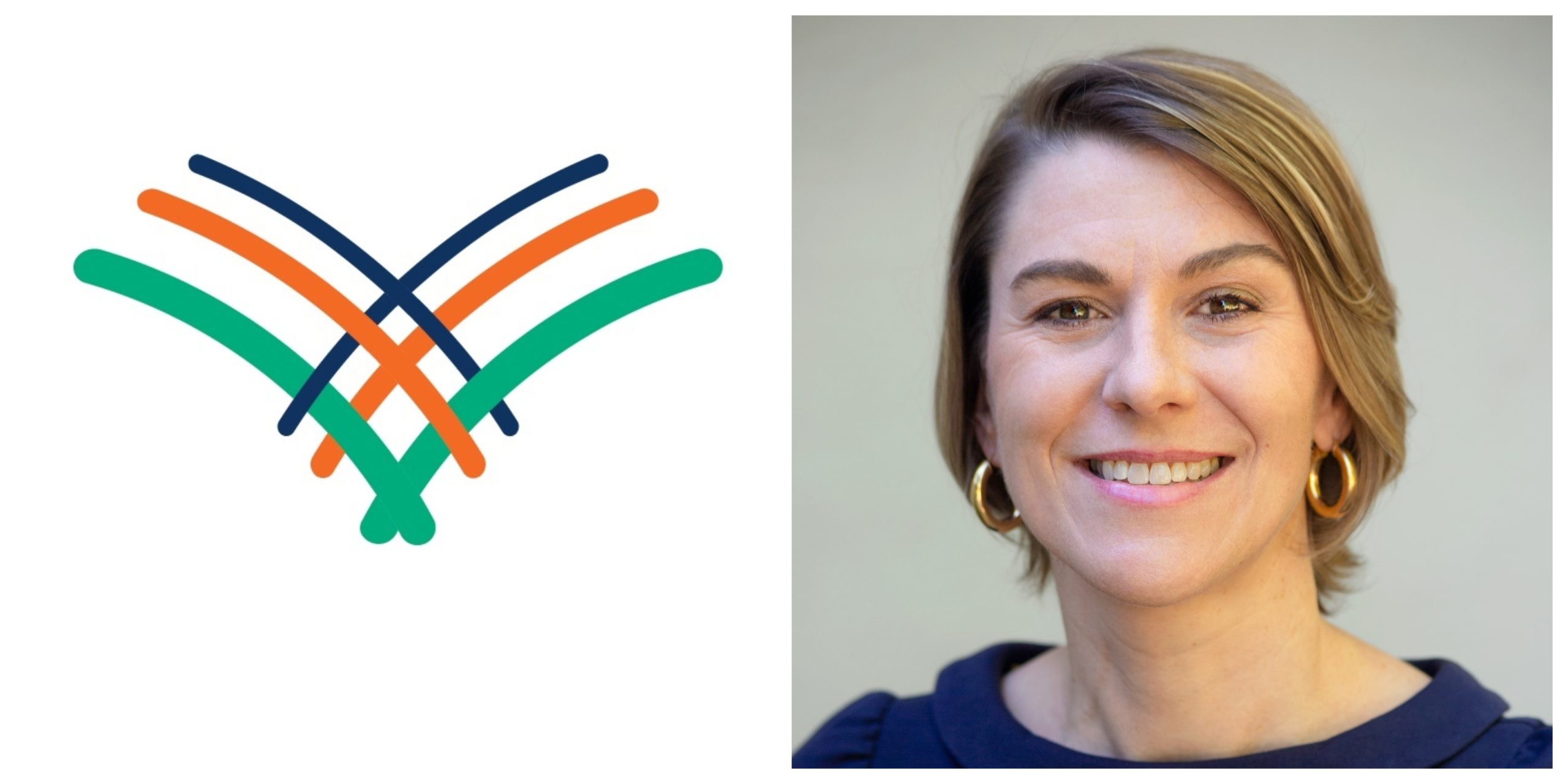
Sacramento, CA – After conducting a nationwide search, Valley Vision’s Board of Directors announced today that Evan Schmidt, currently its Senior Director of Research and Strategy, will be hired as its CEO, effective July 1.
Evan joined Valley Vision in February 2014 as a project leader and was promoted three years later as Director of Research and Evaluation. Prior to Valley Vision, she worked for Smith & Lehmann Consulting as a senior research associate. She currently serves as the co-chair of Empower Yolo, a non-profit organization supporting families with emergency shelter and other basic needs, and was a member of the City of Davis’ Natural Resources Commission. Evan obtained two Masters Degrees from the University of California, Davis and earned her Bachelor of Arts from the University of Kansas, Lawrence.
Brian King, Chancellor of the Los Rios Community College District and Board Chair of Valley Vision Board, said, “Evan has been very influential in shaping Valley Vision’s growth and direction. With a strong record of success as a researcher, facilitator and collaborative problem-solver, Evan is the right person to advance Valley Vision’s mission and ensure it remains a stable and influential force in California.”
Evan said, “I have long held a passion for social equity, economic prosperity and environmental sustainability. As the region continues to grow and change, I am excited to navigate the unique and important role that Valley Vision plays in the Sacramento region and other regions in the state where we work.”
Evan becomes the fourth CEO in Valley Vision’s 26-year history, after long-time leader Bill Mueller stepped down in February, and her appointment will conclude current Interim CEO Meg Arnold’s tenure over the past four months. Meg noted, “I’m delighted with Evan’s hiring as CEO, confident in her well-proven abilities to lead the organization, and look forward to seeing what Valley Vision can accomplish in and for our communities under her leadership.”
Founded in 1994, Valley Vision brings communities together to ensure that our communities can become the most livable in the nation, by building common ground through trusted research and collaboration. Valley Vision plays a unique role in the region as an organization that focuses on the 21st century workforce, clean economy, food and agriculture, healthy communities, innovation and infrastructure, and leadership and civic engagement. Most recently, Valley Vision and three partner organizations developed and launched “Our Path Forward: The Prosperity Strategy,” as the region’s inclusive economic development strategy. Valley Vision is supported by a Board of Directors that includes 30 leaders of public, private and nonprofit entities and employs a staff of 12 people.
For further information: Isa Avancena, isa.avancena@valleyvision.org, 916-599-2137.
Our Recent Days

In the past days, we have all witnessed the unjustifiable and unforgivable death of George Floyd at the hands of police, and thousands of peaceful demonstrators taking to the streets to demand justice and accountability. We have also seen property destruction and the enactment of a curfew for the first time since 1942.
We find ourselves living in multiple simultaneous, interlocking challenges: the public health crisis of the COVID-19 pandemic; the economic crisis spurred by the actions to address the pandemic; the longstanding social- and racial-justice crisis exacerbated by COVID-19 and set aflame by Floyd’s death; and a crisis of trust in leadership on all sides.
Understandably, we may despair. Yet, “It is possible to hold two contradictory truths at the same time,” Sacramento Mayor Darrell Steinberg said early Monday morning, in a good reminder of the resilience of the human mind and heart. While the moments of our last weeks and days may hold despair, they also hold hope.
Our hope in these times comes from the many people in our communities standing firm and resolved – demonstrators gathering peacefully; volunteers tidying the streets and storefronts in the aftermath of property damage; and the work of so many to connect and listen and understand.
From hope and understanding must come action, in many forms. Valley Vision’s fundamental purpose is to make our communities the most livable in the nation – which is, above all, a purpose of hope. For many, however, our communities are not livable. A pathway to truly inclusive economic recovery and growth requires ongoing collaborative actions of many across our communities.
For our part, Valley Vision is acting now to identify and remedy inequalities. Among other things, we’re acting to better target workforce training to current and future middle and high skills jobs; to gather data on regional residents’ resilience to COVID-19 impacts; to bring greater broadband access across the region; to increase digital skills for the jobs of the future; to activate communities about the importance of local air quality, and to support our manufacturing sector and its many good jobs.
“The ultimate measure of a man is not where he stands in moments of convenience and comfort, but where he stands at times of challenge and controversy.” Martin Luther King’s words from 1963 ring just as true fifty-seven years later. In these times of challenges and controversy, we are proud to be standing together in the Sacramento region as we build a just, equitable, and prosperous future for all of us.
Meg Arnold is Interim CEO of Valley Vision.
Guest Blog: SMUD CEO Arlen Orchard On Ensuring Sustainable Communities
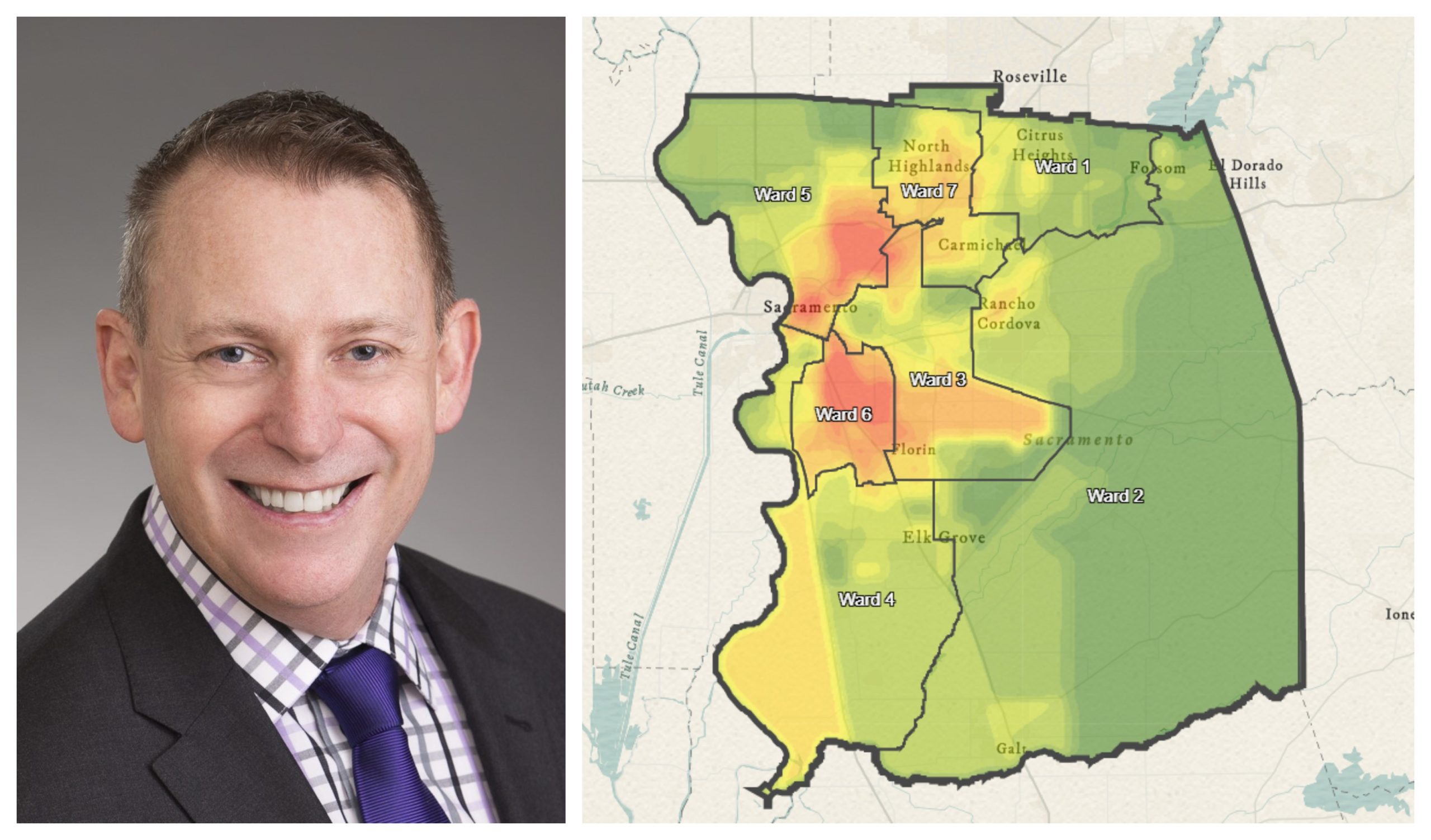
COVID-19 has changed life as we know it, and our fellow citizens living in historically underserved communities are being hit especially hard. As we re-emerge from this crisis, it is more important than ever to pool our energies and resources to help everyone get back on their feet.
SMUD is proud to partner with Valley Vision to tackle some of the region’s most pressing issues, including improving the quality of life of those living in historically underserved neighborhoods and communities.
Along these lines, we recently published a Sustainable Communities Resource Priorities Map on our website that will help SMUD, other businesses, public agencies and non-profits identify and support the communities most in need in the Sacramento region.
We worked with a number of partners, including UC Davis, Sacramento Metropolitan Air Quality Management District and Sacramento Area Council of Governments, to ensure that the interactive map contains voluminous data from a wide range of sources.
The interactive map’s critical data layers include education, public transportation, tree canopy, health care, employment opportunities, electric vehicle charging, food deserts, what neighborhoods are most vulnerable to climate change, and more.
A Brookings report in 2018 found that between 2006 and 2016, Sacramento ranked in the bottom third of the nation’s largest 100 metropolitan areas in composite rankings of growth, prosperity and inclusion. Thirty-four percent of our residents live in households that don’t earn enough to cover basic expenses.
Such inequities were preventing Sacramento from realizing its potential, the report said, recommending urgent action to address our racial and ethnic disparities in education and skills. We at SMUD were aware of the problems before – and had done a lot of good things in supporting economic and environmental sustainability over the years. But the Brookings report convinced us we needed to take a more strategic, collective and inclusive approach.
We heeded the call to action by developing SMUD’s Sustainable Communities initiative in late 2018. Sustainable Communities is designed to support environmental equity and economic vitality in all communities in our region, with special attention given to historically underserved neighborhoods.
We’re supporting not only cleaner energy and carbon reduction in these neighborhoods, but partnering with policy makers, transit leaders, technology companies, heath care providers and community-based organizations to maximize our collective impact and solve real problems for real people.
SMUD obviously can’t solve these problems on our own, which brings me back to the Sustainable Communities Resource Priorities Map. This mapping tool will help SMUD and our community partners make community investment decisions based on good data and direct meaningful change in at-risk communities. It also helps all of us measure the progress of our efforts in these neighborhoods and determine the effectiveness of the investments over time.
Given the projected economic impacts resulting from the pandemic and the disproportionate impact on the poor and communities of color, the map’s rollout is especially timely. SMUD is happy to host and commit resources to update this important community tool on an ongoing basis. The next few years will be especially challenging for the residents of our region and especially for those living in our disadvantaged communities. The need to join together, to collaborate, and to invest in these neighborhoods has never been more pressing. SMUD is honored to serve such a vibrant, diverse community, and we’re committed to not just helping power Sacramento out of this crisis, but to building a more sustainable future for generations to come.
Arlen Orchard is CEO and General Manager of the Sacramento Municipal Utility District (SMUD) and a Valley Vision board member.
Accelerating Our Move Toward Universal Broadband Access

On April 23, Commissioner Martha Guzman Aceves and staff from the California Public Utilities Commission (CPUC) held a public workshop to review California Advanced Services Fund (CASF) initiatives and resources, and facilitate collaboration among regional consortia, stakeholders, local governments, and broadband providers.
Commissioner Guzman Aceves began the virtual workshop with CPUC updates on COVID-19 response actions such as enforcing new Utility Consumer Protections and updating the California Teleconnect Fund to enable distance learning for rural school districts. As COVID-19 continues to amplify and exacerbate the disparities of the Digital Divide, the CPUC and other state entities are mobilizing to ensure all Californians have access to reliable and affordable Internet access and equipment.
The pandemic also highlighted the importance of broadband deployment efforts such as the CASF Infrastructure Grant Aaccount which focuses on providing broadband access to 98% of households in each consortia region, through infrastructure projects. To be eligible, projects must provide broadband service at or above 10 Mbps download / 1 Mbps upload speeds to households identified as unserved. CPUC staff highlighted high density unserved areas in each consortia region that are eligible for funding, utilizing the California Interactive Broadband Map – a tool that provides transparent information on broadband adoption, deployment, and access data. The workshop provided timely information and opportunities for the May 4th CASF infrastructure grant application deadline.
Additionally, the workshop provided opportunities for each consortium to give updates on the varying broadband projects and initiates throughout several regions of the state. Valley Vision Managing Director, Trish Kelly, facilitated this discussion. CPUC staff also provided updates on efforts to ensure that California is able to receive new federal funding programs for broadband to address critical rural connectivity gaps. This is a high priority for the Capital Region which has been locked out of federal broadband funding investments. You can access the regional consortia update PowerPoints and all of the workshop materials here.
Yzabelle Dela Cruz is a Valley Vision Project Associate contributing to the Innovation & Infrastructure and 21st Century Workforce impact areas.
Welcoming Three New Valley Vision Staff Members
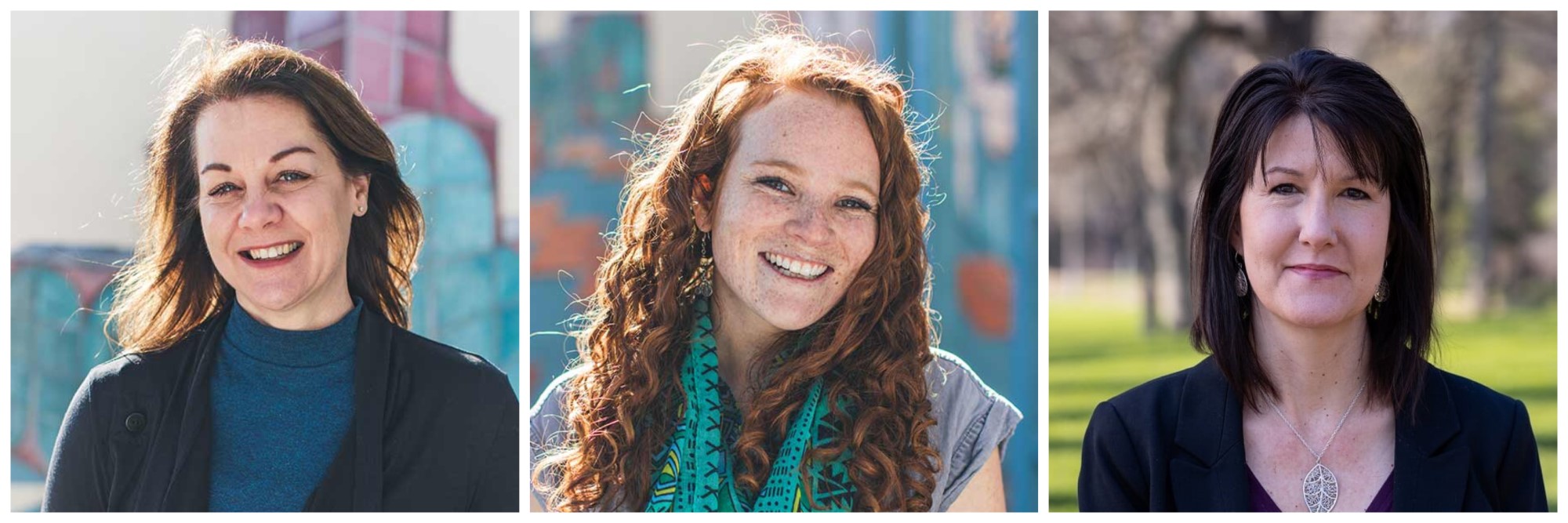
We’re really pleased to introduce the three new staff members whom we welcomed to the Valley Vision team between mid-February and late March. In reverse order of their arrival, they are Renee John, Grace Kaufman, and Kari MacDonald. They have all jumped in with both feet to contribute substantially in each of their roles, even as COVID-19 has added so much change and uncertainty to life. We’re delighted to have them all with us!
Renee John joins us as a Project Leader, and will be leading our extensive 21st Century Workforce impact area in partnership with Managing Director Trish Kelly. Because she arrived on March 30, she has the distinction of being the only staff member we’ve ever onboarded entirely remotely – a situation she’s responded to with flexibility, patience, and good humor. Renee brings with her ten years of workforce development experience, as a director with a community-based nonprofit, where her work included Workforce Innovation and Opportunity Act projects, administering community block grants, youth employment, refugee and English language learner initiatives. Renee has a track record of strong collaborative relationships with a variety of partners, including workforce investment boards, governmental agencies, educational institutions, the business community, nonprofits and other service providers.
Grace Kaufman joined the Valley Vision team in early March, as a Project Manager with responsibilities in our Clean Economy impact area as well as on the Listos California Emergency Preparedness Campaign project team. Grace was previously with the Local Government Commission (LGC), where she worked in the climate and energy field, supporting local policymakers and stakeholders in their efforts to build more livable communities within the Sacramento region and throughout California. In the process, she gained extensive experience organizing and facilitating collaborative meetings with diverse stakeholders. Grace is passionate about environmental justice, sustainability, public health, and pedestrian-oriented design.
Kari MacDonald, the least-new of our new staff members, has been on board with Valley Vision since mid-February. As Senior Director of Business Operations, she manages the business and finance operations of the organization, including ensuring organizational productivity and efficiency, implementing strategies, and optimizing organizational performance. Her career to date has spanned nonprofit, for-profit and governmental organizations, exposing her to multiple perspectives and approaches to community issues. She has more than 20 years of experience in financial analysis and accounting and is skilled in capacity building, finance, board development, grant making, program evaluations and operations.
Meg Arnold is Interim CEO of Valley Vision.
Farm-to-Fork LIVE Hosts Webinar on Regional Emergency Food System Response
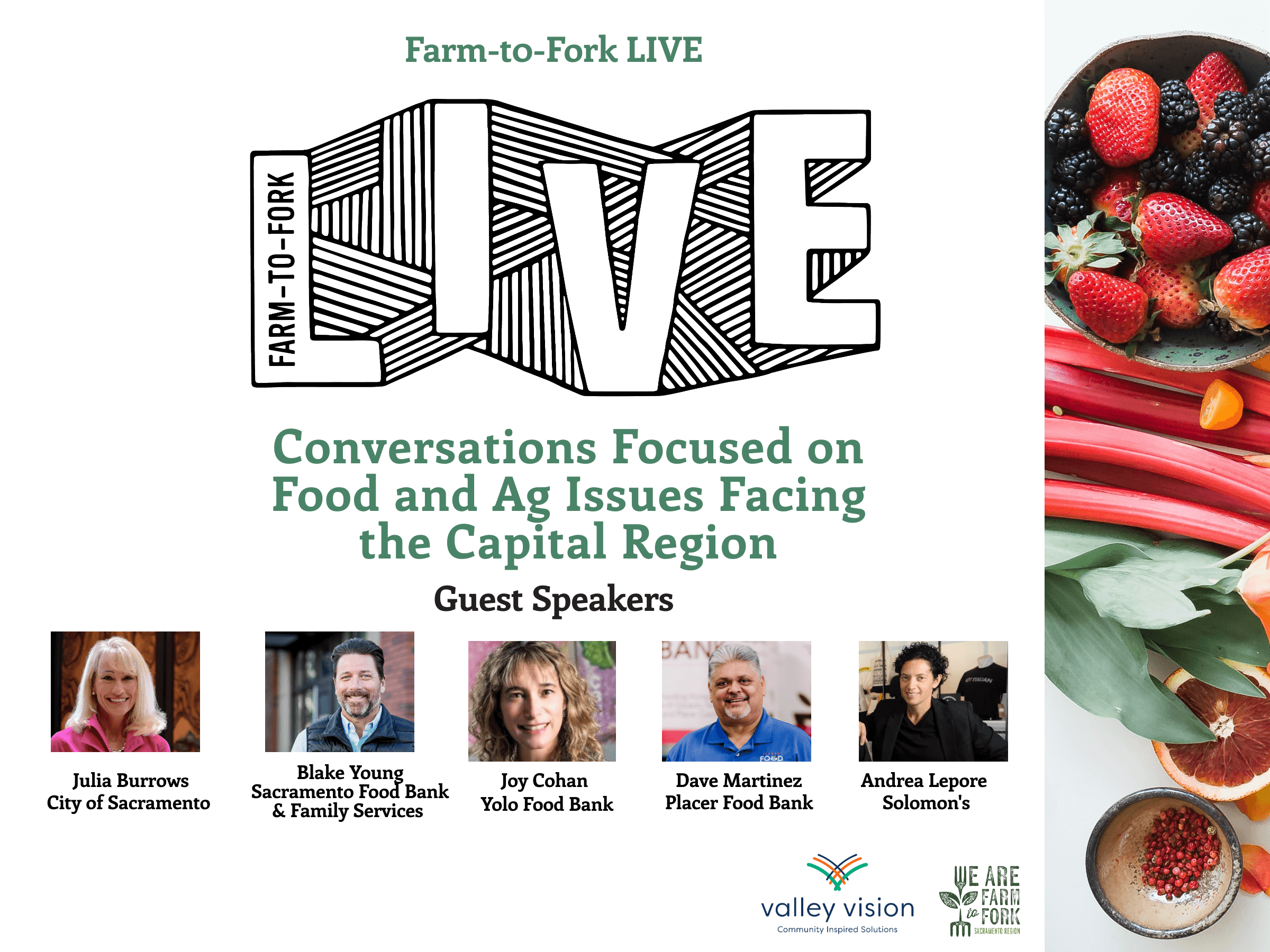
Since the start of COVID-19, families have been facing an uncertain and precarious new reality. From lost jobs to lost income, many worry about how they are going to provide for their families and put food on the table. What has not been uncertain, however, is the vigilance and drive of our region’s leadership that have joined together to make sure communities are taken care, of especially when it comes to addressing food insecurity and food access.
On April 17th, We Are Farm to Fork hosted its second Farm-to-Fork LIVE Webinar focusing on the emergency food system response. Speakers included Julia Burrows, City of Sacramento Mayor’s Office; Blake Young, Sacramento Food Bank and Family Services; Joy Cohan, Yolo Food Bank, Dave Martinez, Placer Food Bank; Andrea Lepore, Solomon’s Deli. Emma Koefoed, Project Manager at Valley Vision, moderated the discussion that focused on how each is addressing the needs of low-income families, elderly citizens, students, refugees, the medically fragile, homeless, and those transitioning into food insecure situations for the first time.
The City of Sacramento and the Mayor’s office have been extraordinary in launching initiatives to support the community. With so many people in need, Julia Burrows, Senior Policy Advisor to Mayor Darrell Steinberg, ensured that the City remains committed to three main objectives during this time. The first is to convene leadership as a way to match available resources to those who are seeking specific support. The City staff has since started facilitating weekly calls among community-based organizations, non-profits, and partners in the food space. Secondly, they are working on fundraising efforts to provide financial assistance back to the businesses. In partnership with Councilman Schenirer, Donate4 Sacramento was launched as an initiative to provide support for local families, individuals, non-profit, and small businesses struggling through the crisis. They have raised 1.2 million dollars thus far. Another example is the collaboration with the Family Meal Program, a project launched by local chefs, who are now able to distribute daily meals to 11 senior and assisted living facilities with the support of Paratransit, an achievement made possible through these partner relationships. Third, using the Mayor as a vessel to communicate information back out into the community and as an advocate for policy changes at the state and federal level.
Similarly, Sacramento Food Bank and Family Services (SFBFS) is working with the City to collaborate on ways to extend their reach into the community. Before COVID-19, SFBFS served about 150,000 individuals from 220 locations per month. Beginning in March, they, like many other food banks, had several distribution locations close due to the fact that many of their volunteer staff are senior citizens. Since then, they have centered operations on 30 locations that they identified to have the capacity to manage the increase of food distribution needs. With the support of the California National Guard and Conservation Corps, they have ramped up their efforts with two mega distribution drive-by pick up locations and continue to move food out the door. Blake Young, CEO of Sacramento Food Bank and Family Services, noted that with public support, donations, and partnerships, like with the City of Sacramento and companies like Raley’s Food For Families Program, they have been able to continue their mission and serve the growing communities need. To find distribution sites closest to you use the Food Finder online tool.
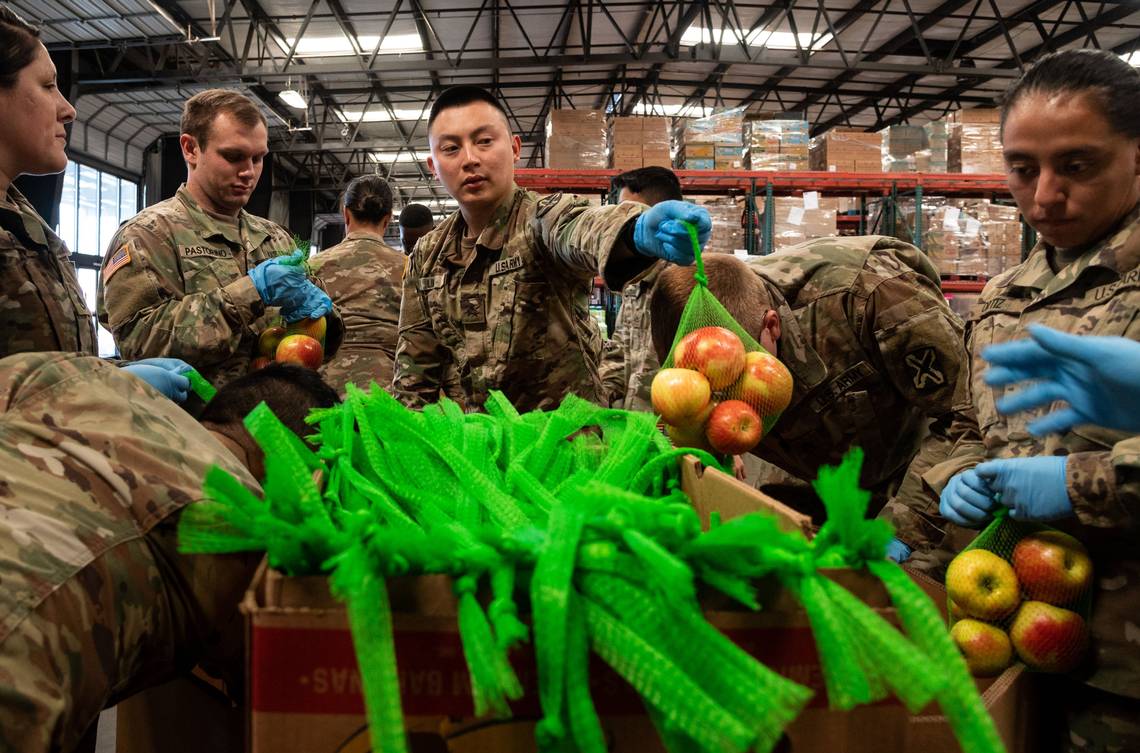
Yolo Food Bank (YFB) serves more than 52,000 people in 19,000 households every month to help end hunger and malnutrition. Joy Cohan, Yolo Food Bank Director of Philanthropic Engagement, outlined with a majority of their clients residing in rural areas, reaching those in need already had its built-in challenges. On top of continuing to serve their normal clients, they are the leading effort on food response for Yolo. With the help of the Yolo Office of Emergency Services, the Yolo Food Bank has developed a delivery model targeting at-home seniors. In the last five weeks, they have served 2,000 households and 4,200 individuals. In another partnership with the County of Yolo, they are also providing three meals a day to homeless populations that are sheltering in local hotels. These meals are being prepared by staff at the Food Bank and delivered by Yolo Bus; as most public transportation is currently out of service or on reduced routes. Yolo Food Bank acknowledges that they still face an uphill battle, as funding remains a critical need to carry out these programs as residents continue to adhere to stay-to-home orders.
Dave Martinez, Executive Director for Placer Food Bank, helps serve over 80,000 individuals living in El Dorado, Nevada, and Placer Counties. Facing a 25% uptick service needs, so far, they have been able to manage the increase but could potentially start facing food shortages in 3-4 weeks. Currently, operating through 70 partner sites, Dave was pleased to report little disruption to his daily operation as his networks have remained resilient. Still, he gave credit to local churches in which have been assisting with deliveries to seniors after they also saw a significant drop in the number of their volunteer services staff. Placer Food Bank is now gearing up to facilitate mass distributions, similar to what SFBFS is doing at Christian Brothers and Encina High Schools, to help reach as many in the community as possible.
In an innovative approach to prevent further outbreaks of COVID-19 among the most vulnerable Solomon’s, Sacramento Covered, Sutter Health, and the City of Sacramento partnered to provide meals for the elderly, unsheltered and medically-fragile individuals. Within 24 hours of shuttering the doors due to the virus, a small kitchen crew was brought in to plan, prep, and cook the meals from scratch. Sacramento Covered’s Community Health Workers help deliver meals to 25 sites daily and have distributed approximately 10,000 meals. Moreover, Andrea is well aware Solomon’s will still face a new normal when things come back online, assessing that it will not be like “turning on a light switch”. It is projected that 80% of the nation’s restaurants could face permanent closures; with limited access to small business loans and financial aid, Andrea, like others, is strategizing simultaneously on projects and plans to address near term and long strategies to keep the doors open and her staff employed.
Valley Vision will continue to highlight the important work that our food system partners are doing to support food access and recovery programs. Please sign up for our Food For Thought Newsletter to receive up to date information and announcements about what is happening in our region.
You can watch the entire interview on Valley Vision’s YouTube Channel. Please visit Hands-On Sacramento to find available volunteer opportunities in your area.
Emma Koefoed is a Valley Vision Project Manager contributing to the 21st Century Workforce and Food and Agriculture impact areas.
Valley Vision Named Regional Organizer of Workforce Initiatives

Funded by the California Workforce Development Board through Sacramento Employment and Training Agency (SETA), Valley Vision has been working in conjunction with four workforce boards covering nine county regions to align opportunities to advance economic prosperity for the Capital Region. Recently, Valley Vision was named the official Regional Organizer to continue this effort with expanded emphasis on converging and coordinating multiple regional workforce-related projects into a more comprehensive and inclusive workforce development initiative.
Key components of this strategy include:
Continuing to Drive Demand Driven Skills Attainment
Valley Vision has been convening industry sector partners including business, education and workforce development to ensure training programs are producing skills attainment in line with employers’ evolving needs. Valley Vision will continue this work on a regional level in the following growing sectors; Manufacturing, Healthcare, Food and Agriculture, Construction, Clean Energy, Information and Communications Technology and Hospitality.
Upward Mobility
Valley Vision will be assisting the four workforce boards on creating an inclusive workforce strategy providing opportunity for economic advancement for all. This will be accomplished by ensuring new and emerging programs and initiatives serve key populations including low income, historically disadvantaged, disconnected youth, justice involved, English language learners, individuals with disabilities, homeless and dislocated workers.
Alignment and Integration
Valley Vision will continue to work across regions, institutional and process silos to further align and integrate workforce development services to create system efficiency and maximum benefit job seekers and employers alike.
Renee John is a Valley Vision Project Leader managing projects within the 21st Century Workforce impact area.
Insights on COVID-19 from the Valley Vision Board of Directors
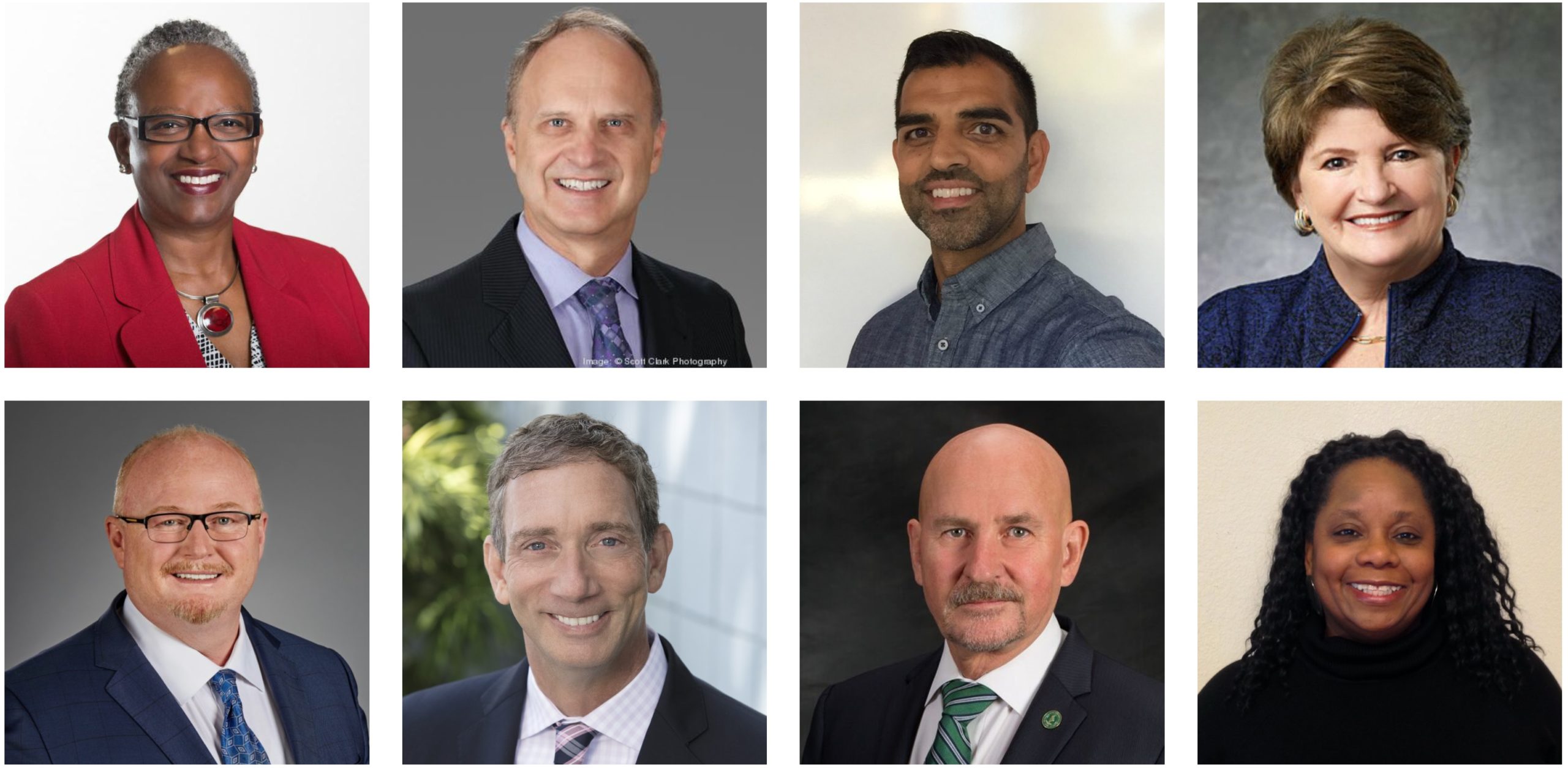
Life in the Capital Region has, like everywhere else, been fundamentally altered by the COVID-19 pandemic. In the midst of our work to address the challenges of today, we are all also trying to anticipate what our economy, our communities, and our overall wellbeing will look like when the crisis point passes and we shift toward recovery.
But data-driven answers to those important questions are hard to find right now, because this is all both so recent and swiftly-developing, and also so encompassing of, frankly, everything. So in place of data, we turned this week to sources of deep experience – members of Valley Vision’s Board of Directors. Their insight and expertise helps us grapple with the perplexity and uncertainty before us.
We hope you’ll find it a useful and informative step along the road to creating, together, answers to what have become our region’s most critical questions.
-Meg Arnold, Interim CEO
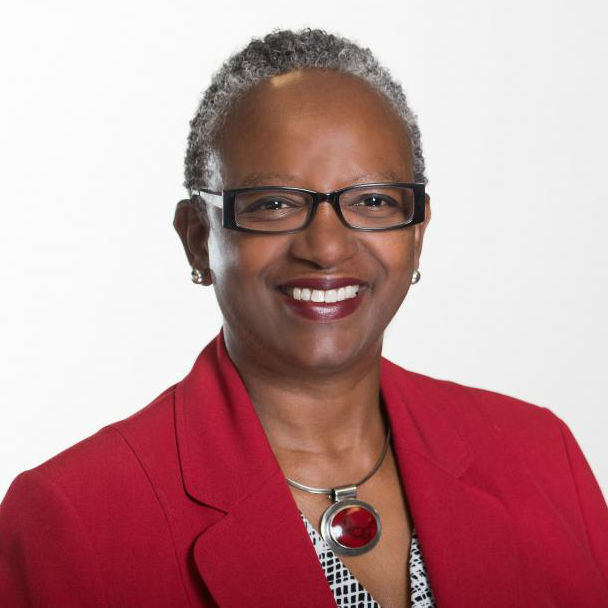
Stephanie Bray
United Way California Capital Region
Question: How do you see COVID-19 impacting vulnerable communities? In what ways is the region stepping up to meet their needs? What are the ways we could improve?
We are seeing huge impacts on our communities’ most vulnerable populations, with both our food system and economy under tremendous stress. School closures have further revealed food access barriers and challenges as many students rely on school meals. Additionally, many families are struggling to pay their bills, purchase medications, and meet their basic needs.
The California Capital Region United Way is stepping up in multiple ways, including working with our nonprofit partners to deploy direct assistance to families and partnering in the local Donate4Sacramento campaign along with our own relief fund to provide childcare, meals, rental assistance and other essential resources for families whose lives have been disrupted by the COVID-19 outbreak. This fund provides a direct payment of $500 for families to utilize however needed with opportunities to connect to peers experiencing similar struggles on a national online platform called UpTogether, a program developed by the Family Independence Initiative based in Oakland, CA.
As the community responds quickly to the crisis, we are seeing nonprofits band together and funders stepping up to meet our community’s needs. Although food access barriers have been issues for our community for some time, this crisis has demonstrated our ability to act and effect change that should empower and encourage us to address long standing systemic issues after this pandemic ends.
As discussed with Yzabelle Dela Cruz, Project Associate
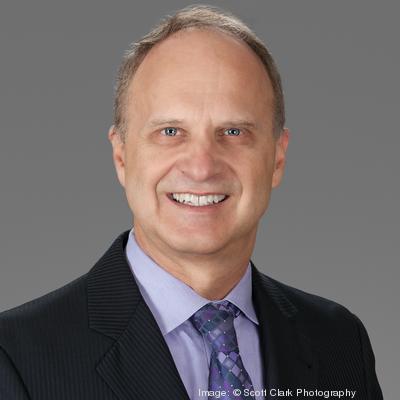
Dave Cheney
Sutter Medical Center, Sacramento
Question: How do you think health systems might evolve as a result of COVID-19? What are the opportunities? What are the challenges?
The broad answer is that no one really knows yet, because the COVID-19 pandemic is not even close to being over.
However, as things are evolving, there are certain indicators that we see now that will probably change for the better that we will not revert back to as we did before coronavirus. The biggest is the use of Telehealth. Healthcare professionals have been trying to promote telehealth in the United States for years, but we have been met with minimal buy-in from the government on account of payers and commercial payer’s coverage.; the argument for telehealth hasn’t really held. Since COVID-19, we have seen greater receptiveness to telehealth through reimbursement policies, and the practices or use of telehealth – especially in our rural areas, and for our patients practicing social distancing where they either prefer not to, or simply cannot physically visit their doctor’s office to seek care. With the advent of the COVID-19 we have been able to create a robust telehealth program. So I don’t think when COVID-19 is over, we will revert back to where we were pre-telehealth. I don’t see that happening. The value is clearly present. Patients love it, physicians love it, healthcare providers in general absolutely love it.
An additional opportunity that we have learned from COVID-19 is assessing how we plan for large scale epidemics. We need to assess how we stock and store personal protective equipment (PPE), and how we secure medical equipment, such as ventilators. We are learning a wealth of knowledge and best practices occurring globally, but when the appropriate time presents itself, we will have an opportunity to revisit our big picture planning, and learn from our efforts of what it is that we can do to improve at the local, county, state, and federal level so as to better prepare for the next crisis. To that point, the access to available PPE has been our greatest challenge. We are anticipating an influx of patients in the weeks to come, and we are trying to ensure that we have the equipment to protect our caregivers in the hospital; from our healthcare providers to everyone that supports healthcare providers. The advantage of an integrated network such as ours is that we can move the resources across our various locations to support the medical equipment and staffing resources from one location to another. We are constantly moving equipment and supplies around the system to make sure everyone at our hospitals have the tools and resources they need to take care of our patients.
I would like to express my deep gratitude to our caregivers, our doctors, our nurses, our housekeepers, our research teams, and everyone working together in this fight. You are our true heroes. Nothing is possible without the knowledge, compassion, and bravery you have all demonstrated over recent weeks. Thank God for them. As a community we thank you for putting your lives at risk for us, daily.
What can we do to support our hospitals in these times?
- Stay home
- Practice social distancing
- Wash your hands
- Take care of yourself physically, emotionally and spiritually
As discussed with Sonia Dueñas, Project Associate
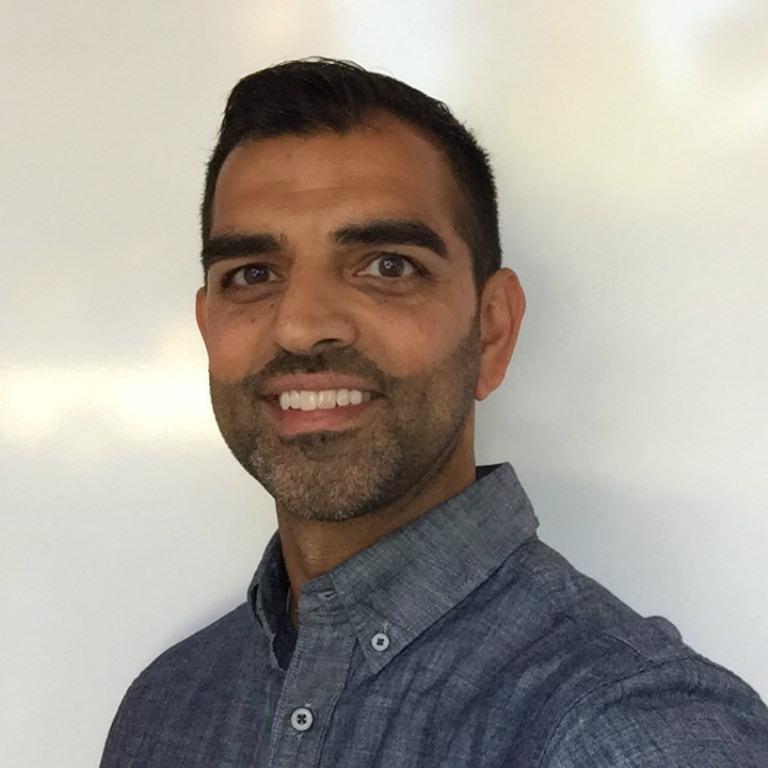
George Claire
The Shop @ VSP Global
Question: You are known as a design thinker. How will design thinking be able to help us in the recovery?
I think we can all agree that on in the wake of C-19, the world will emerge different than it was before. The impact of this episode on our lives will be felt for a while, and businesses both small and large will most definitely be reevaluating many aspects of their operations and questioning how to proceed from here. But when you take a closer look at this, it’s happened before; maybe not this suddenly, but it has happened. Uber disrupted the taxi business, and Redbox and Netflix pushed Blockbuster out of the industry. Granted, C-19 has come on suddenly and has forced businesses to very quickly and unexpectedly reexamine themselves. But this is exactly where design thinking can help businesses reimagine and reinvent themselves.
As a Design Thinker, I often ask a hypothetical question during my sessions—whether the audience is a client I’m consulting for or they’re internal within my own organization—and that is, “If it all burned down, would you rebuild it the same way?” But it’s no longer hypothetical; it’s real, and most everyone within every organization is strategizing and wondering how they’re going to get back on their feet. Where do we go from here and how? Design thinking, when paired with other business tools, offers a methodology that helps one understand what their real challenge is and why—so they’re focused on the right problem, not what they believe the problem to be—and how to go about addressing that challenge while making sure they’re utilizing and allocating their resources in the most effective way.
Design thinking is about meeting needs—real, inherent needs—and enhancing experiences. And the first step to getting there is asking one of the most important and powerful questions anyone can ask: “Why?”. Asking why all along is vital so that one not only learns and reaches an understanding of what’s at the root cause of the stated need but also the context and importance of why that root cause exists. Equally as significant as asking why, however, is to listen to the end user’s responses from a place of empathy. Understanding the problem and need from the end user’s perspective is absolutely necessary; this is ultimately who you are designing for, and they should be at the center of your design universe.
If, as a business, you’re providing a service or producing a product and you have failed to understand or address your customer’s real challenge, you’ll probably find yourself designing a solution which is now in search of a problem. And that can be costly. If you’re lucky, you will not have spent too many resources before you figure this out. But I think we can all admit that we’ve been a part of a project or some initiative that kicks off with a solution in mind rather than beginning with research to discover the real challenge. Other factors leading to poorly designed solutions include failing to place the end-user at the center of our design universe, not really listening to their needs, and being so in love with the solution (idea) we came up with that we do everything we can to try and force it to succeed.
The design thinking methodology provides a means for us to keep ourselves really honest and, as a result, makes sure we apply our resources (people, time, money) to solving the right challenges. And if not, design thinking ensures that we learn this early enough that it can be addressed. But design thinking is a culture shift, and that’s one of the hardest things—if not the hardest thing—to change within an organization. In its simplest form, design thinking is build, measure, learn. Then you iterate, pivot, and repeat. And you do so with the end user engaged with your project from beginning to end. If you do this, then yes, design thinking can certainly help us recover on the other side of C-19. But are people willing to embrace and trust the methodology? I can’t think of a single person the C-19 event hasn’t impacted to some extent, so my hope is that many will take a closer look at this opportunity—because that’s what it is—and ask themselves, “Now that C-19’s over, do I rebuild the same way?”. This is where design thinking can help you to reinvent and redesign your business—to use this as a turning point and come out of this pandemic stronger than you went in.
As discussed with Grace Kaufman, Project Manager
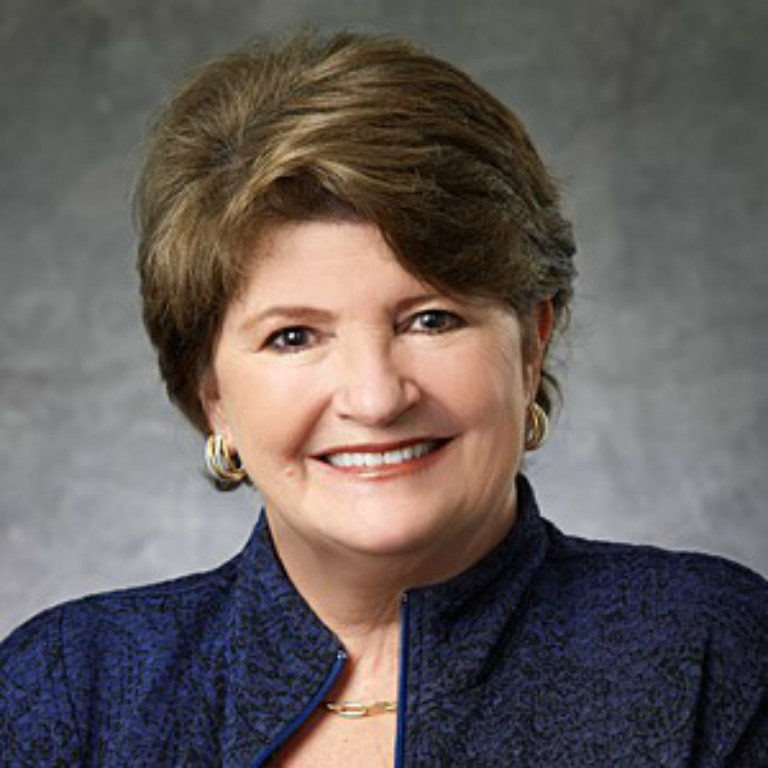
Linda Cutler
Sacramento Region Community Foundation
Question: How are you seeing community organizations adapt to new ways of delivering services right now?
The Sacramento Region Community Foundation is uniquely positioned to respond to local emergencies. The Foundation has always enabled philanthropists to support the issues they care about, but is now taking urgent action to serve area nonprofits in light of the COVID-19 pandemic.
All community-serving organizations in the region are being affected by the COVID-19 pandemic. Some organizations providing services have shifted to doing so remotely, but many others lack this infrastructure. Further, many clients are unable to access these services whether remote or not – between the shelter in place order and the lack of Internet access among many of our most vulnerable community members. Non direct-service organizations are simply looking to stay afloat. In all cases, ongoing communication between nonprofits and their constituents is critical.
To assist nonprofits with service delivery and emergency resources, the Foundation has activated the Sacramento Region Disaster Relief Fund, which has been seeded with an initial investment and grown with the support of fundholders, individual donors, and other regional partners.
Question: What sorts of support are nonprofits asking for in applying for Disaster Relief Funds?
The Sacramento Region Disaster Relief Fund is intended to rapidly deploy funding to address the many challenges that local nonprofits are encountering due to the virus. Because of the focus on swift deployment, we made the application very simple to complete and submit.
We are finding that many applicants need to ensure that staff stay employed, and many others need help in amplifying their service delivery activities and adjusting to new public health mandates and best practices. For example, our funding can help set up remote infrastructure that allows nonprofits to continue their work – funding for Zoom licenses is an example of a request that we’ve received. Among direct service providers, the food banks and their partners across the region are doing a tremendous job of filling that gap. From food delivery directly to seniors to school districts feeding children, so many food system leaders are stepping up to help our most vulnerable right now.
The cancellations of Spring and Summer fundraising events and campaigns is causing a deep disruption in revenue for nonprofits of all types. As such, we are also seeing applicants seek funding simply to stay afloat in this uncertain time.
Question: Looking ahead, what opportunities do you see to strengthen or change our systems?
The COVID-19 pandemic is going to change the way that society operates in the long-term. What is clear is that we need to invest in alternative ways of supporting our most vulnerable and each other.
We are all acting with urgency right now to ensure that basic needs are met, but looking to the future, COVID-19 will reinforce the value of having reserves when challenges like these arise. As part of the Foundation’s capacity-building efforts, we help nonprofits plan for sustainability. In the future, we need to focus on ensuring that there is investment in replenishing or establishing those reserve funds.
The effects of the COVID-19 pandemic are still being understood, but the Foundation is learning from this painful lesson in its work to build a resilient future.
As discussed with Adrian Rehn, Project Leader
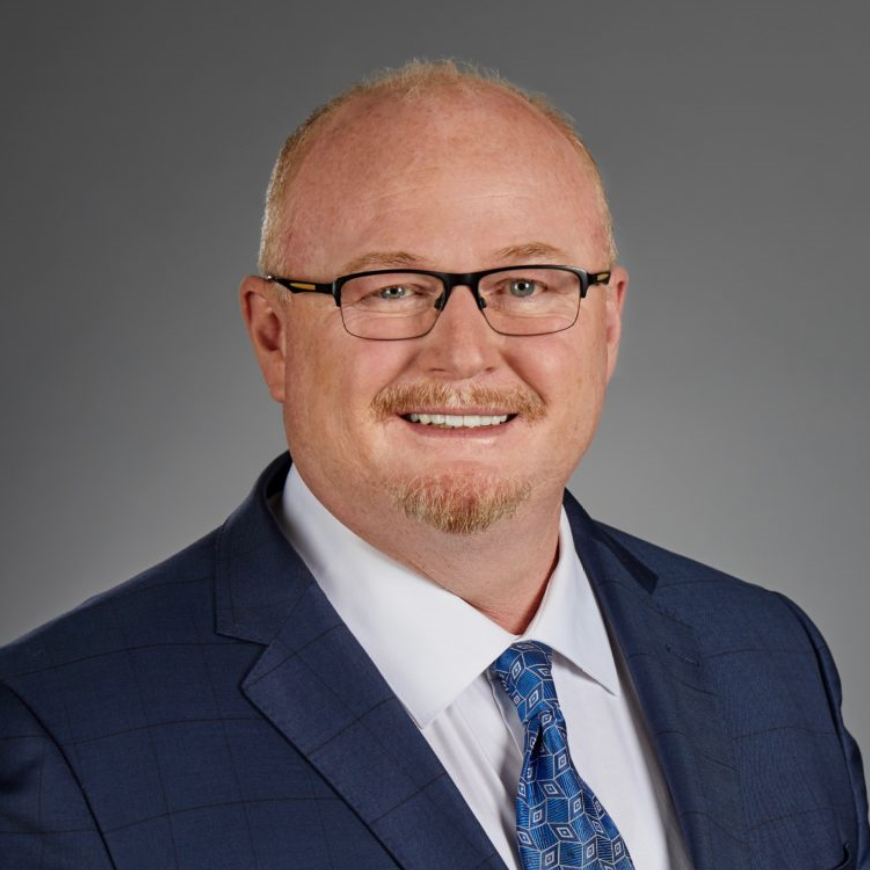
Earnie Franklin
VSP Global
Question: Like others, your firm moved the majority of your workforce to a remote basis really quickly. What are some of the takeaways you’re seeing after the first three weeks of this new way of working?
At VSP Global, we provided our leadership team with tools to manage remotely and our employees with tools to collaborate remotely. We embraced Microsoft Teams as our primary collaboration tool.
During the past few weeks, there are three things I know for sure:
Business Continuity Plans are critical: Having Business Continuity Plans is what enabled us to transition to a remote workforce so quickly. Thankfully, it isn’t often that we get a real-world opportunity to review these plans. Now is the ideal time to critically evaluate and revise them with newfound knowledge.
Creativity is needed: It has been inspiring to see how employees are rising to the challenges our members, doctors, clients, brokers, and partners are facing — just like they always do during crises and natural disasters. In the past two weeks, I’m proud to share that VSP Global has:
- Expanded essential medical eyecare services to 57 million members during the month of April to reduce the impact on hospitals and other medical facilities.
- Extended telehealth functionality to doctors, ensuring VSP patients can receive critical eyecare.
- Begun beta testing telehealth functionality that allows patients to visit with their doctors via their iPhone or Android devices.
Leading with kindness is essential: The situation in which we find ourselves is unusual, and the reactions of those with whom we’re virtually interacting might seem surprising as well. Since emails and texts don’t convey context or emotion, we remind our employees to take a moment to remember their interactions with people before the pandemic. Don’t make assumptions. Ask questions or ask for clarification if something doesn’t seem right.
Above all else, now is the time to be gentle with ourselves and with others. In that vein, we provide lots of resources online like remote fitness challenges and meditation groups to help our employees maintain their physical and mental health.
As COVID-19 has impacted everyone across the globe, we remain focused on ensuring our employees’ safety and well-being while supporting our valued stakeholders.
As discussed with Emma Koefoed, Project Manager
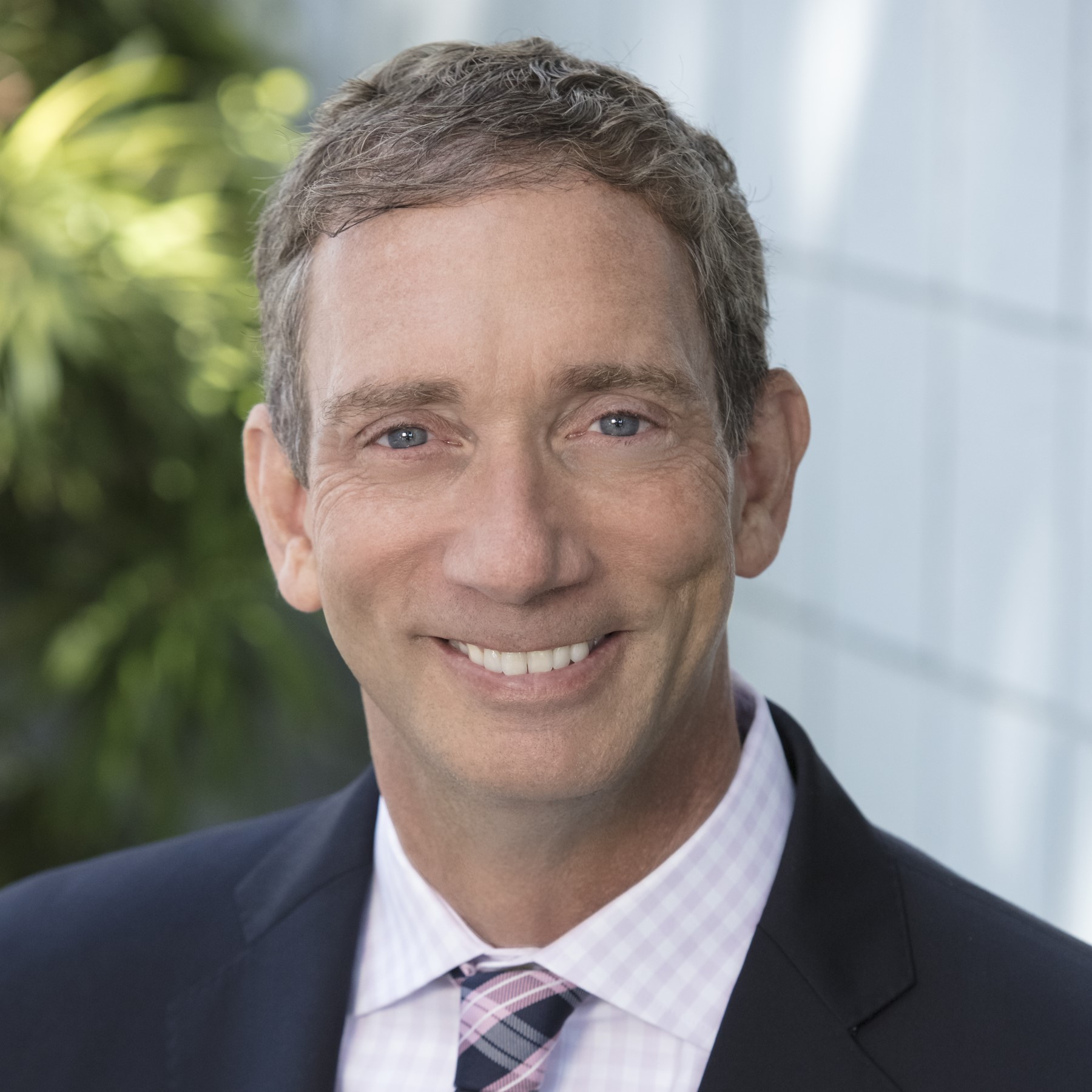
Brian King
Los Rios Community College District
Question: How do educational institutions remain effective in a remote environment – what changes, adaptatations or growth are you seeing and do expect?
It’s amazing how quickly we made the transition. About a month ago, Elk Grove Unified School District reported its first COVID-19 case. By Friday, March 13th, we had suspended all in-person classes, and March 18 was the first day of remote operations.
In less than 2 weeks, we went from recognizing that there was a very serious threat to having everything take place remotely.
An overwhelming number of classes are continuing online, but there is a challenge in getting to that point with some lab classes. In terms of adjustments that have to be made to how classes are graded, those will be determined on a class by class basis.
This experience is really highlighting the digital divide: Some of LRCCD’s most vulnerable students don’t have access to broadband or a computer. We’ve handed out hundreds of Chrome books to many of our students who need them; we’re also helping our students find low cost or free broadband services.
Some of the lessons we’ve learned will have a positive impact. The short timeframe we had to go remote was a catalyst for things to be done.
It’s hard to predict what this will look like moving forward. It will certainly increase our inventory of online courses available for students who need them. Of course, there is no substitute for in-person learning, and that will continue to be the dominant form post COVID-19. Change is always hard, but crisis makes it essential. There are a lot of good lessons we’re learning from doing things remotely, and it will ultimately lead to a better experience when we’re back to doing things face-to-face.
As discussed with Isa Avanceña, Project Associate
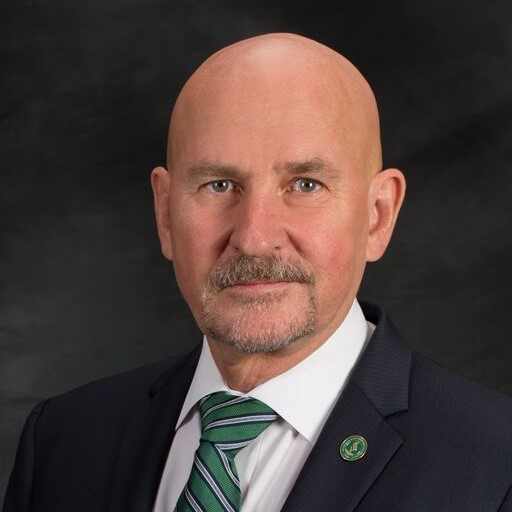
Robert Nelsen
Sacramento State University
Question: Knowing that the country is potentially moving towards a recession – what are your hopes, concerns, and/or advice for your students?
I want my students to know that we may be going into recession but we have been through recessions before and we’ve come out stronger every time. I want them to know that their education will be with them forever and no one can ever take it away from them. It will pay off in their lives. They may not see it right now because it’s tough when they are living paycheck to paycheck or they are worried where that first paycheck is going to come from. Students will have to trust their education just like they have to trust in themselves.
Sacramento State has helpful resources and services for current students and alumni that can help them professionally at the campus’ Career Center. All students are automatically a life member of the Alumni Association with no membership charge. This is a great network opportunity because the Alumni Association’s career services is designed to pair each alumna with mentors who are from their professional industry. They can help alumni connect to the right employers, help them prepare for jobs, and know what to expect in their field of interest. Alumni are encouraged to take advantage of this opportunity as much as they can. For more information to become a member of the Alumni Association to access this service, Sacramento State alumni can visit our website.
Overall, I am always worried about my students’ mental health as these are stressful times and the stress is not good. We have counseling available right now for current students who need it. They can visit a counselor in person on campus at The WELL or schedule an appointment for online counseling. The faculty is always there to support them with ongoing advising. Even though the pandemic is preventing many of us to be off campus, students still have access to services and resources. We have become a virtual university but that does not change our continued services to provide accessible resources to our students.
As discussed with Houa Vang, Project Associate
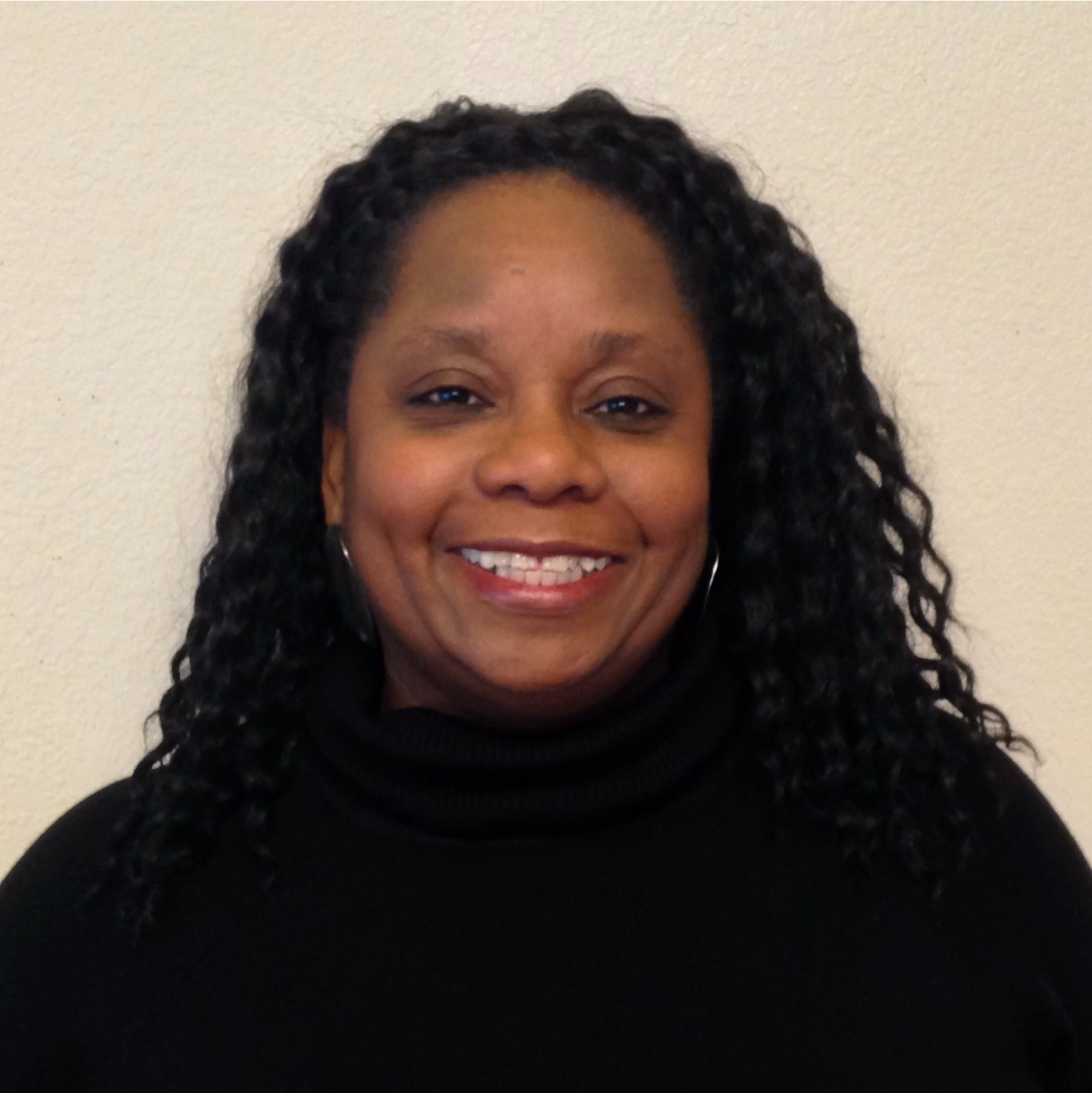
Tina Roberts
Roberts Family Development Center
Question: How are you seeing community organizations adapt to new ways of delivering services right now?
Community organizations are being incredibly inventive after dealing with the initial shock and disruption of most of their services. Roberts Family Development has shifted to primarily remote work in supporting families and children while taking on new roles needed in the current crisis including delivering meals to families. Many nonprofits are affected financially, not having large cash reserves to weather immediate changes in project funding. They are talking with their grantors, looking to revise scopes of work and applying for assistance through the Payroll Protection Program or Disaster Loan Assistance.
Community organizations are utilizing Zoom and online platforms to engage their community members. When services are provided onsite, staff have been retrained to practice social distancing and wear protective equipment which is very different from the high touch forms of engagement they are used to. Community organizations are also responding to the need to provide additional support to our teams including mental health check ins, acknowledging the drastic difference in service delivery brings challenges and frustrations. Overall nonprofits like Roberts Family Development are looking to serve the community as best we can during this public health crisis and sustain a solid structure to enable us to resume services as quickly as possible when allowable.
As discussed with Renee John, Project Leader
Learn more about Valley Vision’s 29-member Board of Directors.